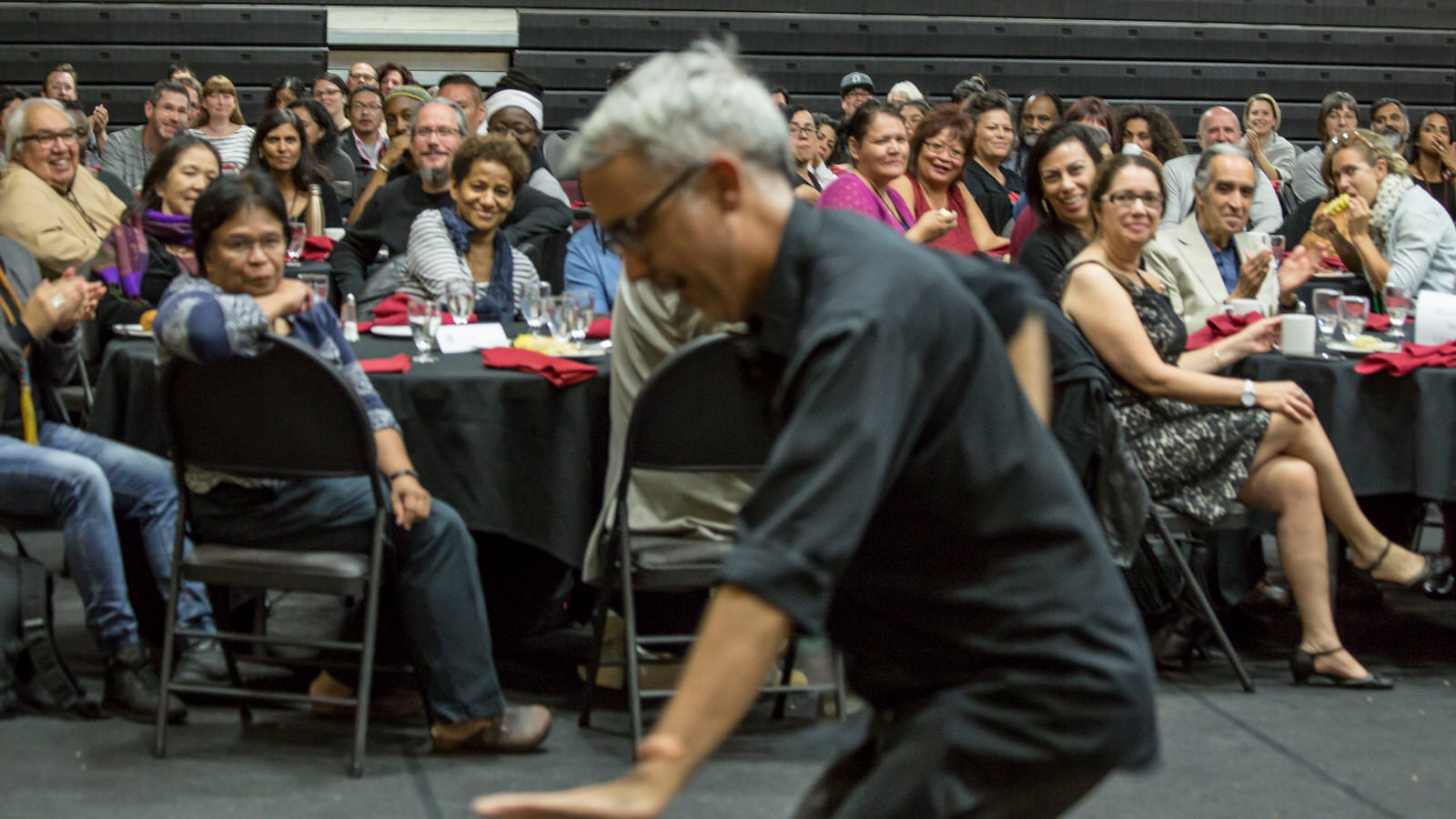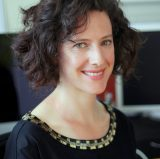 Peter Morin performs in front of guests at the
Peter Morin performs in front of guests at the
Community Feast on Lekwungen territory during the
PC/Cp Gathering 2017. Photo credit: Kirk Schwartz.
Myself and Léuli entered our designated room, which I initially thought was spacious. There were many people already sitting, but to my nervousness, more and more people streamed in. We had to find more chairs and kept shifting around to fit everyone. As I looked around the room I was struck by the beauty of everyone, I felt blessed to be there. I could see that everyone had multitudes of stories to tell and brilliant thoughts to share. As people entered and found places to sit, there was an intensity on their faces of a need to share their voices. This is a topic of great importance to everyone. “How will we go about this with so many voices?” I asked myself, and looked over at Léuli. I suggested he start first. Léuli jumped from different topics of his communities’ perspectives on cultural appropriation, whiteness, hope/knowledge extraction, and where we might be going. I found it hard to figure out how I would bridge from his words because of the richness of his experience, knowledge, and how fast he spoke. I was worried about the word, whiteness.
It was my turn and I talked about my background, mainly to explain that my experience in the world is gratefully not just white. I spoke about this because I worried about what people would think of me leading a talk about cultural appropriation without them knowing my unique background. I talked about how I grew up in Nunavut in an Inuit community and then when I was 11 we moved to Labrador where we moved to Sheshatshiu, an Innu community. Still 23 years after my family moved away I get asked to go back by the Innu First Nation government to do work with elders and youth on video projects. I spoke about how I navigate in the community by observation, collaboration, humour, friendship and permission. Sheshatshiu is where I feel I am the most at home.
We opened up the discussion to the room, but I can’t remember the question we posed. A very long minute went by before anyone else spoke.
Two men had dialogue that bounced back between each other. I think they were saying the same things but in different ways, so it took awhile before they reached an agreement. One of the topics they discussed was the flow of technology and the knowledge of different cultures when they meet in history. Often where culture is appropriated in an uninformed and damaging way, it is in the service of capitalism. Some other topics discussed were: Disney’s Moana, power dynamics, and the Palestinian and Israeli struggle. My mind spun with their words of complexity and intelligence.
Close to the end I recall a writer talking about writing a poem and including a sentence in a First Nations language with which she has no relationship, but she wanted to pay homage the land and people where her writing dwelled. Myself and David Garneau offered suggestions to take the time to find an elder to translate the words, instead of using an online dictionary. It made me think it is necessary to have more discussions like this, and more forums for people to reach ways of avoiding cultural appropriation.

Navarana Igloliorte is a multidisciplinary artist and filmmaker who grew up in Nunavut and Labrador. She uses a variety of mediums such as stencilling, short gauge film, video, painting, printmaking, and dance. Navarana’s works are often in collaboration with individuals or groups of people to weave together teachings, stories, movement, and sometimes humour through reflection of our connectedness with each other and the natural world. Her artwork and films have been exhibited and screened across Canada in galleries, as well as international film and media arts festivals. Recently Igloliorte received a Film and Video Artists-Research/Creation Grant from the Canada Council for the Arts toward a solo exhibition at the Owens Art Gallery (March 2018) in New Brunswick. Since 2004 Navarana has frequently traveled back to Labrador to work with the Innu First Nation and Nunatsiavut Inuit to create documentaries and short films in collaboration with community members. Navarana completed her BFA at Nova Scotia College of Art and Design University (2003) and BEd. from Memorial University of Newfoundland and Labrador (2005). She currently lives in Vancouver, BC.